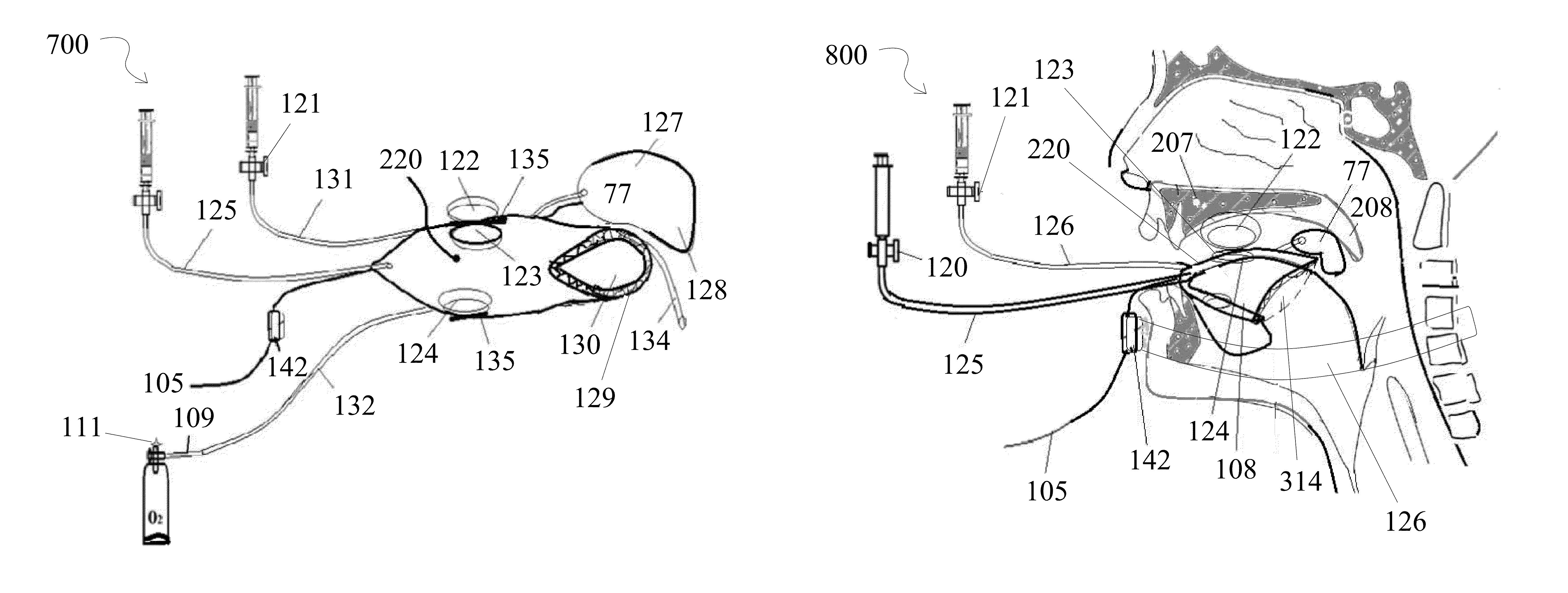Device for snoring and obstructive sleep apnea treatment
a technology for obstructive sleep apnea and snoring, which is applied in the field of snoring and obstructive sleep apnea treatment devices, can solve the problems of snoring during sleep, contributing to snoring, snoring and obstructive sleep apnea, and achieve the effect of preventing soft palate vibrations
- Summary
- Abstract
- Description
- Claims
- Application Information
AI Technical Summary
Benefits of technology
Problems solved by technology
Method used
Image
Examples
Embodiment Construction
[0060]In the following detailed description of the invention, reference is made to the drawings in which reference numerals refer to like elements, and which are intended to show by way of illustration specific embodiments in which the invention may be practiced. It is understood that other embodiments may be utilized and that structural changes may be made without departing from the scope and spirit of the invention.
[0061]According to the present invention, snoring and obstructive sleep apnea patients is treated by recognizing patient condition attributable at least in part to the vibration of the soft palate during inspiration and movement of a base of a tongue of said patient moving towards a pharyngeal wall of said patient to cause obstructive sleep apnea. The present invention prevents the tongue of the patient from obstructing the air passage so as to cause snoring and obstructive sleep apnea.
[0062]FIG. 1 is the diagrammatic presentation of the normal air way 100 with the soft...
PUM
 Login to View More
Login to View More Abstract
Description
Claims
Application Information
 Login to View More
Login to View More - R&D
- Intellectual Property
- Life Sciences
- Materials
- Tech Scout
- Unparalleled Data Quality
- Higher Quality Content
- 60% Fewer Hallucinations
Browse by: Latest US Patents, China's latest patents, Technical Efficacy Thesaurus, Application Domain, Technology Topic, Popular Technical Reports.
© 2025 PatSnap. All rights reserved.Legal|Privacy policy|Modern Slavery Act Transparency Statement|Sitemap|About US| Contact US: help@patsnap.com



